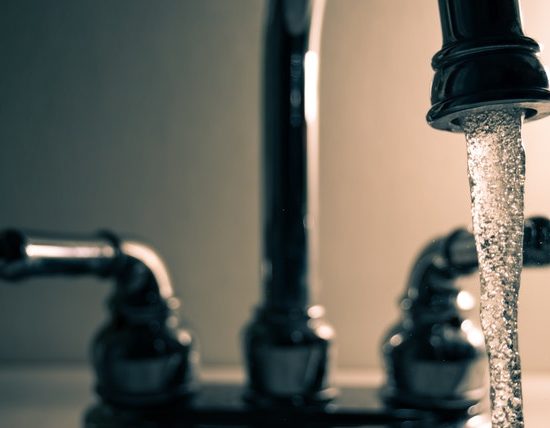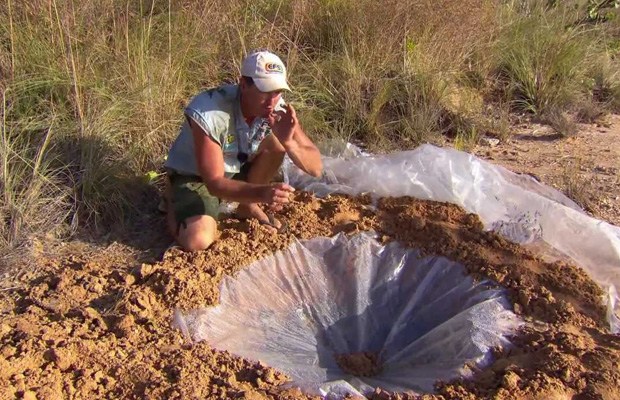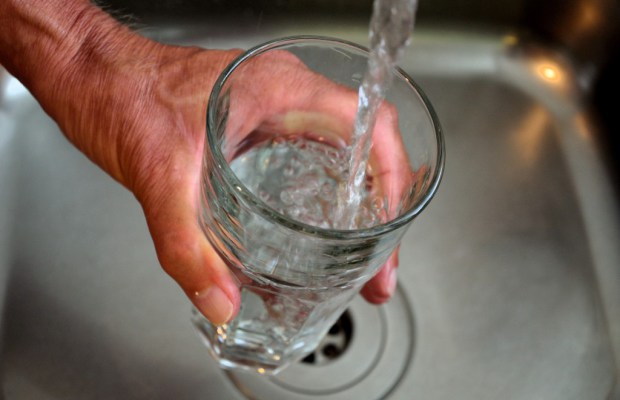
Water is life. As a prepper, as an outdoors person, and even as a human, this fact has been drilled into our heads over and over. It’s a cornerstone of the “Rule of Threes.” Three days without water and the human body starts to suffer the consequences. Water has a big place in our preparations, and it rightly should.
Water is important not only for drinking, but for cooking, for washing, and especially for hygiene. (And harvesting rainwater is a great way to have it be readily available!) My beautiful wife loves to go camping and has lived out of a backpack for weeks at a time, but the elimination of bodily wastes in the woods is not a favorite activity for her. Or for anybody, I think!
One of the most cost-effective ways to store larger amounts of water is in food-grade barrels. The barrels are strong, compact, and are relatively inexpensive. Aside from their weight when full, the other drawback to storing water in barrels is the inconvenience of getting the water back out of them.
But what if there was a way to use your emergency water storage barrels to run your household in a nearly normal fashion during a grid down event?
Would it make you happy to use your indoor plumbing as usual, without going outdoors to some out-of-the-way spot to defecate or urinate? What if you could do dishes in the sink, almost like normal? Get a glass of drinking water from the kitchen tap? I have developed a system for my home that allows me to do just that.
My inspiration for this emergency water storage system came from a power outage, timed coincidentally with a day when the entirety of my in-laws had descended upon our home. A squirrel had met its end at an electrical substation, causing power outages in the local village, extending into the rural area where we live. Although I owned a small generator at the time, it was nowhere near large enough to run the well pump.
I had water stored in several 55-gallon barrels, and initially thought I had finally found a chance to prove my foresighted genius for my wife and her family. I took a 5-gallon camping water jug (you know, the kind with the spigot?) down to my water barrels, anticipating finally having a payoff for my hard work in preparation for a day like this. I assembled the plastic water hand pump (purchased in 1998 for Y2K), and that’s when my troubles began.
The pump had threads that were different than the threads on my barrel. It wouldn’t screw in, and thus, I had to hold the pump in one hand and pump with the other, while my third handheld the jug to….uh oh: I needed more hands! After I recruited my brother-in-law to hold the jug, I found out the suction hose on the pump was also missing a part, too. The hand pump was out of order. Shaker siphon? Dang. I last saw that on my camping trip a few months ago. In the end, I used a new-in-box drill pump and a battery operated drill. It was an OK ending to the water problem, but not ideal.
What finally evolved from that occurrence and some experimentation is an emergency water storage system that I am pretty happy with. In fact, one problem may be that it is too convenient, not discouraging water use.
The system is simple and – aside from the battery and pump – inexpensive.
Currently, my indoor emergency water storage consists of two 55 gallon barrels. I have a small 3 gallon per minute RV water pump attached to a couple of valved pickup tubes, and leading to a spigot that I installed in the water line coming into the house from the well pump. The RV water pump is powered by a small 35AH gel cell connected to a float charger, so the battery is always topped off. It can also be recharged by the 50W solar panel and small charge controller I already have.
In the photo, you will notice that there are two spigots, with a valve between them. This was so I could completely isolate the well and pressure tank from the house plumbing: If the foot valve on the well pump went out, and I tried to pump water into the house plumbing, water from my barrels would be pumped back down my well. That’s no good! The valve, hose, and fitting between the pickup tubes in the photo is the inlet where I fill the barrels.
The clear hose (far right) connected to the upper spigot. Note the isolation valve between the two spigots.
Hooking up the water tanks to the spigot is a snap. I have placed valves in line to allow me to draw from one or the other, or both barrels. With a flick of a switch, the pump is activated. Since it is an RV pump, it has its own pressure sensor, which activates the pump when a faucet is opened. When someone flushes the toilet, the pump kicks on and refills the toilet tank. When someone opens the kitchen tap to wash hands, prepare food, or get a drink, the pump kicks on and delivers the water.
This system also routes the water through our whole-house water filter. also At 3 gallons per minute, it is very nearly the same as having our normal well pump working. The flow is noticeably less, but not by a huge amount. Just for fun, I took a shower with the backup system, and it was very acceptable. My water heater does not use electrical power to heat water, so it was even a hot shower! See what I mean about the system being too convenient? It does not really encourage water conservation.

The simple PVC pickup tubes. The transparent tube in the center is for filling the barrels.
During one of the “Grid Down Weekend” exercises that our family performs, with no attempt at water conservation, we easily went through more than 60 gallons of water per day. We have a larger, 220V generator now, able to run the well pump. During the Grid Down Weekend, I ran the generator for about two hours a day. We let the refrigerator and freezer run, charged batteries, and ran the well pump for laundry, took showers and refilled the water storage barrels. This actually worked pretty well, letting us use water as “normal” without running the generator. If we were unable to run the generator for some reason, we would definitely want to implement methods to reduce the water usage.

This 50-watt panel recharges the battery in just a few hours
Materials and cost breakdown for my project:
RV pump: eBay, used, $40 shipped
Clear food-safe tubing: 6 feet @ $1.50/foot
Garden hose “repair end,” female: $3.50
Misc. 1/2″ PVC fittings, valves, tubing: $15
Hose Clamps, stainless steel: 3 @ $1.24/piece
Battery: Used, free. New they are about $55
Float Charger: $20, Amazon
Wire, terminals, switch, etc.: $10
The drawbacks to this emergency water storage system are fairly minimal. As I pointed out, you have to keep an eye on your water use. You also have to make sure that your hose ends are kept clean. You have to make sure your stored water is clean. You may find yourself “stealing” that battery for other needs. Other than those limitations, I think it’s a great system that makes living without grid power a bit easier.
Oh, I did finally get the hand pump repaired and figured out. You know, just in case.
Other self-sufficiency and preparedness solutions recommended for you:
The vital self-sufficiency lessons our great grand-fathers left us
Knowledge to survive any medical crisis situation
Liberal’s hidden agenda: more than just your guns
Build yourself the only unlimited water source you’ll ever need
4 Important Forgotten Skills used by our Ancestors that can help you in any crisis






















